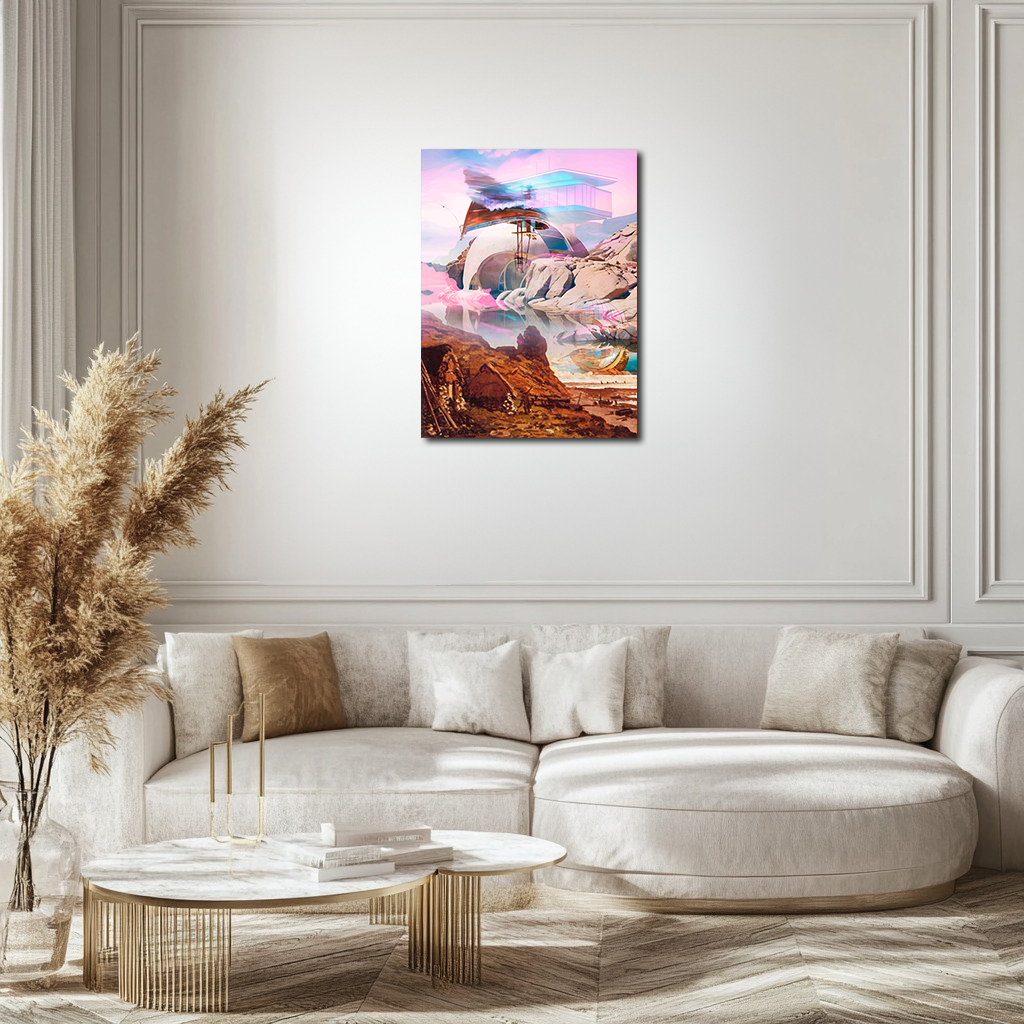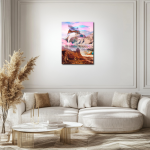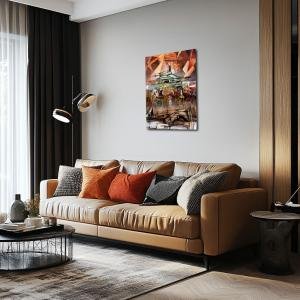Echo Havens: Sainte-Adresse Across the Fold of Time
Echo Havens: Sainte-Adresse Across the Fold of Time reimagines Monet’s 1867 The Huts at Sainte-Adresse as a surreal futuristic coast where humble shelters evolve into luminous, organic architecture. Blending earth, rock, and imagined design, this piece transforms survival into sanctuary, echoing the past through curved structures and refracted light. It offers a meditation on memory, time, and the enduring harmony between nature and innovation.
Please see Below for Details…
Hotline Order:
Mon - Fri: 07AM - 06PM
404-872-4663
Claude Monet’s The Huts at Sainte-Adresse , painted in 1867, captures a humble coastal moment—wind-worn structures huddled near the Channel, set against the muted resilience of rock and sea. In this surreal-futuristic reinterpretation, titled Echo Havens: Sainte-Adresse Across the Fold of Time , the original huts become portals—transformed not in opposition to their past but as extensions of it, evolved through time, memory, and the architecture of imagined survival.
At the base of the composition, Monet’s world remains grounded. Earth-toned strokes anchor the shoreline, and thatched huts rise like scars of survival from a time defined by raw necessity. The figures and textures of a 19th-century coast still breathe in the canvas's lower left corner, tethered to the weight of salt, soil, and sky. But the world around them has opened. Time, in this vision, is not linear—it refracts, folding history into its own future and rebuilding sanctuary from ruin.
Rising from the rocks above, a new kind of habitat emerges. It is not built—it has grown, drawn from the bones of stone and the breath of sky. The forms curve and stretch—an orb-like dome embedded in granite, a translucent cube suspended with improbable elegance, and sweeping structures that echo sails and wings. These are not dwellings in the conventional sense—they are memory vessels, constructed as much from reflection and resilience as from material.
The rocks do not divide—they carry. Their surfaces, once static, now host fluid geometries of shelter. The futuristic forms—glass-paneled observatories, organic pods, hovering terraces—do not impose upon the land. They emerge from it, shaped by tides long gone, adapted to light, silence, and possibility. The reflections in the water do not mirror perfectly—they shimmer with distortion, reminding us that this vision is layered, shifting, and deeply alive.
Color in this piece transcends realism. Monet’s original palette, grounded in earthen browns and slate skies, yields upward to a luminous world of surreal pinks, radiant violets, and soft cyans. These hues infuse the landscape with emotional temperature, turning barren into beautiful, ruin into reverie. The sky is no longer passive—it pulses with the quiet hum of imagined futures, casting iridescent tones across stone and structure.
This is not a utopia. It is a survival imagined forward. The huts of Sainte-Adresse, once temporary and unadorned, have not disappeared—they have evolved, layer by layer, into something more permanent, more inward. The tension between fragility and durability, nature and innovation, silence and structure, hums through every fold of the collage.
As the artist, I sought to build upon Monet’s language of atmosphere and light while pushing his setting beyond the horizon of time. His original work observed humanity living with the land—sheltering, adapting, enduring. In this reinterpretation, that same spirit endures, but it has matured, mutated, and ascended. The future is not disconnected from the past—it grows from its foundations, bearing the marks of salt and memory even as it rises into strange elegance.
The surrealism in this vision is not disorientation—it is meditation. The architecture does not dominate—it listens. The light does not flatter—it reveals. This imagined future remembers the hands that built the huts, the winds that tore at them, and the fires that once warmed their interiors. It preserves them not in form, but in essence.
Add your review
Your email address will not be published. Required fields are marked *
Please login to write review!
Looks like there are no reviews yet.








